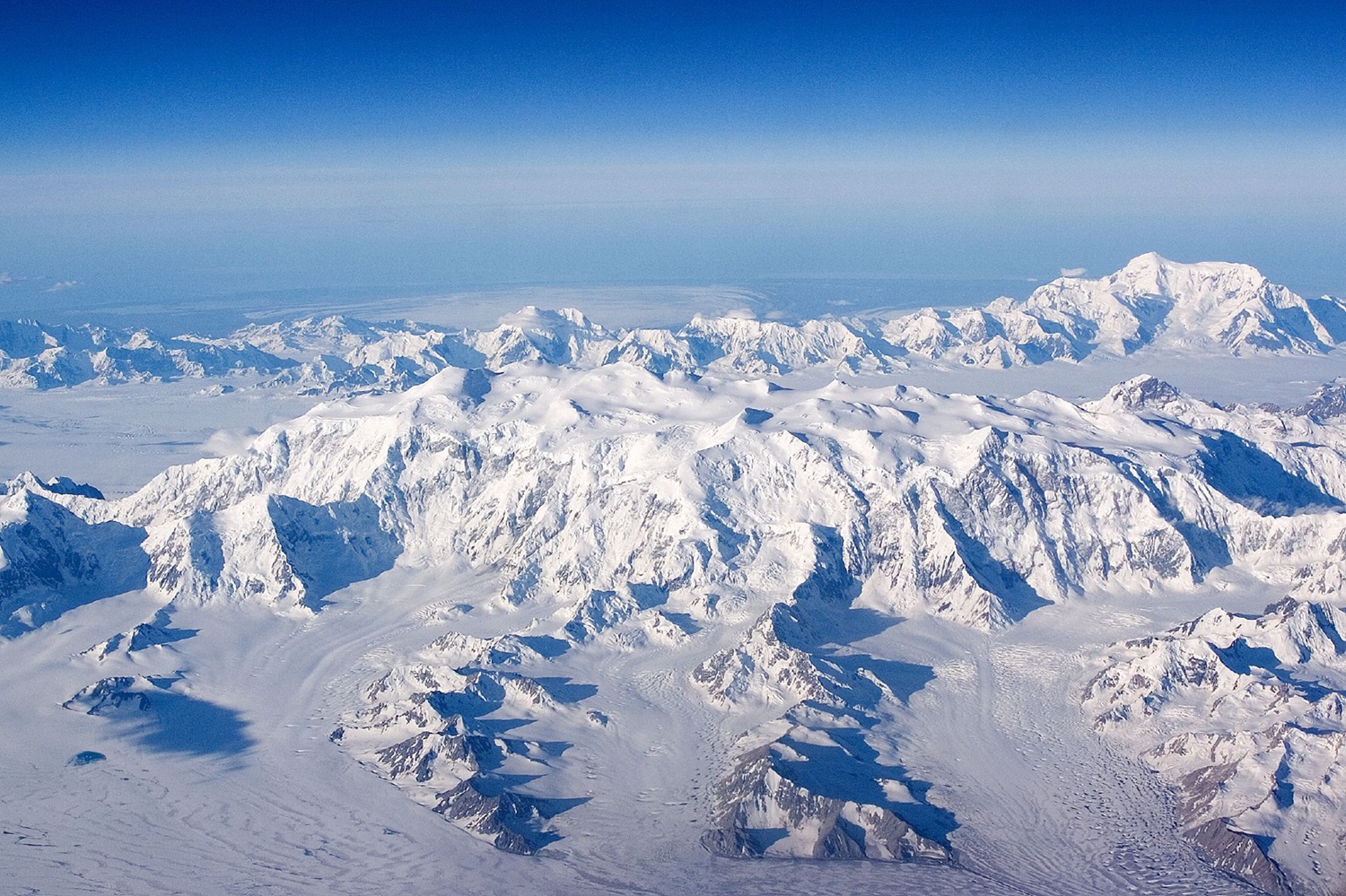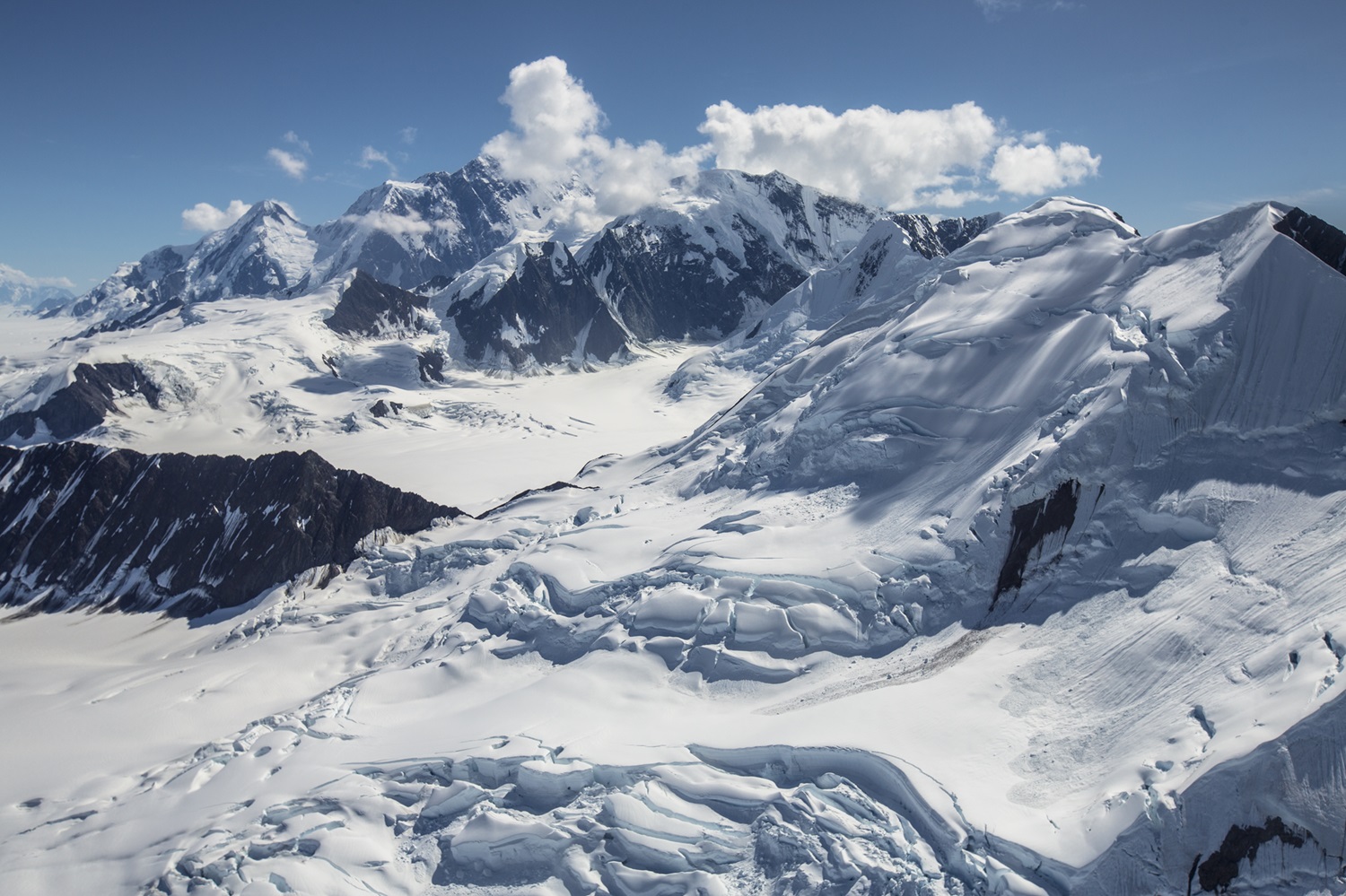Mount Logan, with an elevation of 5,959 m, is Canada's highest mountain. It is also the second tallest peak in North America after the United States’ Mount Denali. Mount Logan is located within Yukon’s Kluane National Park and Reserve as well as within the traditional territories of the Kluane and White River First Nations (see First Nations in Yukon).

Description
Located in the Yukon, Mount Logan is part of the St. Elias Range alongside Mount St. Elias, Canada’s second-tallest peak. Mount Logan is surrounded by the St. Elias Icefields, which feed many valley glaciers (see Glaciers in Canada).
Mount Logan is one of the world's most massive mountain blocks, rising abruptly 4,150 m above the flat Seward Glacier on the south side. The mountain is largely composed of granodiorite, a granitic rock of intrusive origin. Multiple summits rise above a northwest-to-southeast elongated snow and ice plateau, varying in elevation between 4,500 m and 5,400 m, extending over 19 km. Three of the summits exceed 5,890 m in elevation.
History
Mount Logan was named after Sir William E. Logan, a Canadian geologist and founder of the Geological Survey of Canada.
In 1925, a joint Canadian-US expedition led by Albert H. MacCarthy made the first ascents of Mount Logan’s Weak Peak (5,915 m) and High Peak (5,950 m). At the time, High Peak was believed to be 6,050 m high, but a resurvey of the mountain in 1992 established its height at 5,959 m. The mountain has now been climbed by 13 different routes. For over a decade, ending in 1980, a high-altitude physiology research program was conducted by a joint US-Canadian medical team from a camp at 5,303 m, supported by the Arctic Institute of North America and the Canadian Armed Forces. Meteorological and glaciological research has been carried out on the northwestern col (5,340 m).

Present Day
Today, many trails exist in the areas surrounding Mount Logan. One of the best-known trails is King’s Throne. While this trail does not climb Mount Logan, it provides a fantastic view of the mountain. The mountain may also be viewed through sightseeing flights.
Haines Junction is one of the nearest communities to Mount Logan.

 Share on Facebook
Share on Facebook Share on X
Share on X Share by Email
Share by Email Share on Google Classroom
Share on Google Classroom



